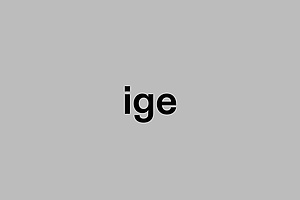
At the Institute of Structural Design, we recognize that the load-bearing structure lends any building structural stability, creates its form and spaces, and enables the building to achieve its designed appearance and character. Structural design is thus a fundamental part of the general design process. The prerequisite for a suitable and logical structural design is a thorough understanding of possible types of structure, their load-bearing characteristics and their functional mechanisms.

Sustainable Construction, Institute of Structural Design, offers a broad spectrum in the field of sustainability assessment of buildings, life cycle assessment (LCA), life cycle costing (LCC) and systemic sustainability modelling including digitalisation and multi-criteria decision models to support the sustainability and climate targets agreed at on a European level.

At the Institute of Design in Existing Structures and Architectural Heritage Protection, we are concerned in research and teaching with the built environment and take care of existing structures. Looking both to the future and the past, we regard existing building stock as a reference space for future action and as a space of possibilities for practical design. Our attention is focused not only on the masterpieces of architectural history in their respective architectural, historical and social context, but above all on the rather inconspicuous architecture of everyday life. We understand architectural heritage protection beyond the preservation of material heritage as a proactive approach to today’s structures—the monuments of tomorrow.

The akk represents three subjects that are closely linked: architectural theory, art history and cultural studies. Architectural theory attempts to answer the question according to which aesthetic, social and political principles we should design architecture. Architectural theory is therefore always oriented toward the future and to a certain extent normative. However, architectural theory itself has a history going back to antiquity, the central texts of which we also teach in our courses. In art history, architecture is treated as part of the history of art. It shows that architecture as “Baukunst” (the art of building) is, on the one hand, an artistic discipline and, on the other hand, has always been interrelated with the visual arts. Finally, cultural studies enable us to better understand the cultural techniques, media and forms of communication of architecture and its relation to everyday and popular culture.

The Institute of Urbanism is responsible for training students in all areas of urban development and spatial planning, at the Bachelor’s, Master’s and doctoral levels. The institute promotes an urbanism that gives priority to what has been neglected by the urbanism of the Anthropocene: the territory is no longer speculated upon, but inhabited. The systems that support our (human) lives are organized and spatialized in such a way as to leave space for (non-human) nature. The institute is creating a body of thought that is based neither on a high-tech future nor on a regressive return to the 50s. The method, research and design taught at the institute propose a better, healthier environment designed within the planet’s boundaries: territorial urbanism. The institute’s main themes are: territory, transition, land use frugality, building re-use, building obsolescence, ecological innovation, space for water, social inequalities and active mobility.

Building use changes—architecture remains. The Institute of Design and Building Typology thus focuses on the study of building typology, asking questions about the aspects of buildings that shape their use, morphology and spatial design. The history and evolution of these aspects provide precedents and analytical foundations for both designing new buildings and conversion, new use and re-use of existing buildings. After all, the most ‘sustainable’ building typologies are undoubtedly those that have proven themselves over centuries. The institute is interested in the architectures that exhibit this lasting success and looks at how they can be reinvented and developed further in contemporary ways.

Every two years the faculty awards a new guest professorship for Integral Architecture to practicing architects with an innovative profile, who introduce current trends and methods into the curriculum. The position spans over a period of two years and is focused on the teaching of architectural design studios. Former guest professors were Lisa Yamaguchi (dreisterneplus***+, München) who held the professorship from 2022 to 2024 and Florian Summa and Anne Femmer (summacumfemmer, Leipzig) who held the professorship from 2020 to 2022.

The aim of the Institute of Architecture Technology in teaching and research is to conceptualie and develop buildings and constructions that transcend mere materialization of primary functions—we strive to design with consideration for the social, ecological, technical and cultural factors for which we, as architects, bear collective responsibility. Above all, our objective is to raise awareness of new construction methods to address the challenges posed by climate change. This includes promoting a circular economy, decarbonizing building materials and operations, reusing and recycling building components, and creating durable, adaptable constructions with sustainable design principles. Therefore, the Institute of Architecture Technology focuses intensively on the relationship between design, technology and construction. This is taught in lectures, seminars and exercises in didactically precise and tailored teaching formats which aim to prepare architecture graduates for a sustainable architectural practice.

Architecture and Timber Construction combines fundamental theoretical principles, practical applications, new research topics and strategic collaborations, which aim to prepare graduates for the challenges of the construction industry in terms of design, technology and construction. In times of global crises which undermine the stability of international supply chains and planning processes, the professorship relies on regional resources and local value creation. Through an emphasis on sustainable forestry and the strategic use of timber as building material, sustainability is seen as a core element of an ecologically and economically future-oriented building culture. The interdisciplinary collaboration within TU Graz and the close cooperation with external specialists enable us to integrate and combine topics from structural design, building technology and building physics, and thereby provide comprehensive insight into modern timber construction.

At the Institute of Spatial Design we are interested in architecture as a practice of designing and redesigning buildings. The work on a building is proof of one’s architectural thinking. The thought of construction defines the essence of architecture. A house is physical expression, structure, detail, material, history and theory. It is materialized interdisciplinarity. Building is the core task of our subject. Houses make up our built environment. Houses are cultural expression. They are Nebenmenschen.

The Institute of Architecture and Landscape is one of the pioneering academic settings that fundamentally redefines architecture’s relation to the living world. The invitation and inquiry of the i a&l is to forge novel alliances between human and more-than-human agencies with vast consequences. In doing so, it is to cultivate imaginaries or thought spaces that engage entangled thinking and probe a possible planetary future where culture and nature are no longer a dialectic pair of opposites. By addressing processes and consequences of current ecological, energetic and societal challenges, the purpose is to develop ‘a cultural ecology’ of our future society. We offer transdisciplinary collaboration with national and international academic partners, policymakers, industries, activists etc., to develop unique project constellations that elevate teaching, design, discourse and societal innovation.

The Institute of Contemporary Art promotes critical thinking and new forms of artistic and intellectual engagement at the intersections between art, science and society. Contemporary art is examined and expanded on the basis of artistic research, art theory and individual creation. Students learn to create works on their own initiative and reflect on conditions, media and instruments of contemporary art while acquiring the necessary skills. Projects are not only developed theoretically, but are always designed to be implemented. We thus place particular value on the acquisition of skills in dealing with a wide variety of materials as well as digital and manual production techniques.

Teaching at the Institute of Housing encourages students to develop a cultural-historical perspective on the spatial composition of dwellings and residential buildings in their evolution from individual tools and functional elements—stove, table, bed and bathroom etc.—which over time developed into distinct rooms. Understanding this functional assignment of rooms and how they are codified differently in different sociological and geographical cultures is the foundation for a critical and comparative assessment of significant residential buildings from Austrian and international traditions.

Architecture is energy. In addition to expressing the cultural values, priorities and aspirations of a society, architecture must provide answers to an existential societal challenge—the equitable sharing of available resources. Buildings are responsible for approximately 40 % of global CO2 emissions. At the Institute of Buildings and Energy, energy-efficient architecture is understood as a triad of minimized resource consumption, optimal indoor climate and high architectural quality. Sustainable development cannot go hand in hand with a loss in the quality of our built environment. Research focuses on maximizing the energy performance of buildings and cities and developing architectural and urban design projects that are inherently energy efficient by optimizing their form and construction. In teaching, the focus is on architectural strategies to maximize energy performance. In the design process, the parameter of energy influences the form finding and configuration of the design from the very beginning—form follows energy.

The Institute of Architecture and Media is dedicated to the research and application of digital media in architecture and design. The digital era fundamentally changes all aspects of architecture: how we design it, how we communicate it, how we construct it, how we experience it. At IAM we see this as an opportunity to work towards an “Augmented Architecture”: to use the digital repertoire to find innovative ways to design, to collaborate, to fabricate and to visualize, mindful of societal challenges such as climate change or biodiversity collapse. Parametric and algorithmic methods, digital fabrication and material experiments, architectural geometry, animation and visualisation, BIM, AI and machine learning as well as VR/AR and interactive installations are part of the broad and colourful spectrum of topics that IAM deals with and that students can learn about in our classes.

The Institute of Construction and Design Principles introduces the many facets of architecture through a number of construction-oriented as well as design subjects. The integration of the two main courses “Construction” and “Design” within one department emphasizes their tight interrelationship. Throughout the first year the course focuses on the essentials, with the goal of teaching a basic understanding of architecture, three-dimensional space and the contextual connections in the built environment. We ask the primary questions “Why?” and “How?”. In addition, the students are given tools with which to further develop and communicate their ideas. These include sketches, technical drawing (by hand and computer), layouts and model making, as well as verbal and written presentations. Together with the sketching, the model making reflects one of our main concerns: understanding the making of architecture as a process.
